How about more insights? Check out the video on this topic.
Introduction
Document databases have rapidly gained popularity due to their exceptional flexibility and scalability. However, effectively extracting meaningful insights from the unstructured data they store poses a significant challenge. This article explores the complexities of visualizing document databases, drawing on insights from Tatiana Krupenya, CEO of DBeaver.
Understanding Document-Oriented Databases
To appreciate the challenges of visualizing data in document databases, it’s important to first understand what makes these databases unique. Document-oriented databases are a key segment of the NoSQL family and are gaining popularity due to their flexibility and scalability. Unlike relational databases, which store data in tables, document databases store data as documents, most commonly in JSON format.
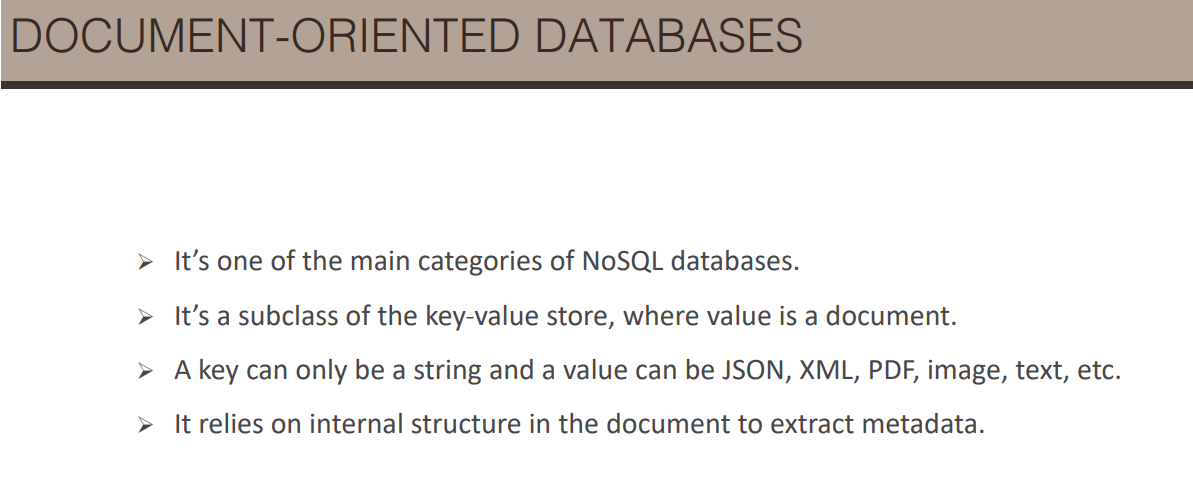
Key Features of Document Databases:
- Document Structure: Each document typically contains a unique ID (key) and a data structure, often in JSON, XML, or similar formats.
- Flexibility: Documents can vary in structure, which allows for easy modifications without needing to redefine the entire database schema.
- Internal Metadata Handling: Unlike simple key-value stores, document databases utilize the internal structure of the document to manage metadata, making them more complex and flexible.
Unique Characteristics of Document Databases
Document databases are distinguished by their reliance on the internal structure of the documents they store. This internal structure is not just used for storing data but also for handling metadata and supporting various operations, such as querying and indexing.
Why JSON?
In the context of document databases, JSON is particularly popular due to its simplicity and ease of use in application development. JSON’s human-readable format allows developers to quickly understand and manipulate data, making it a preferred choice for many use cases.
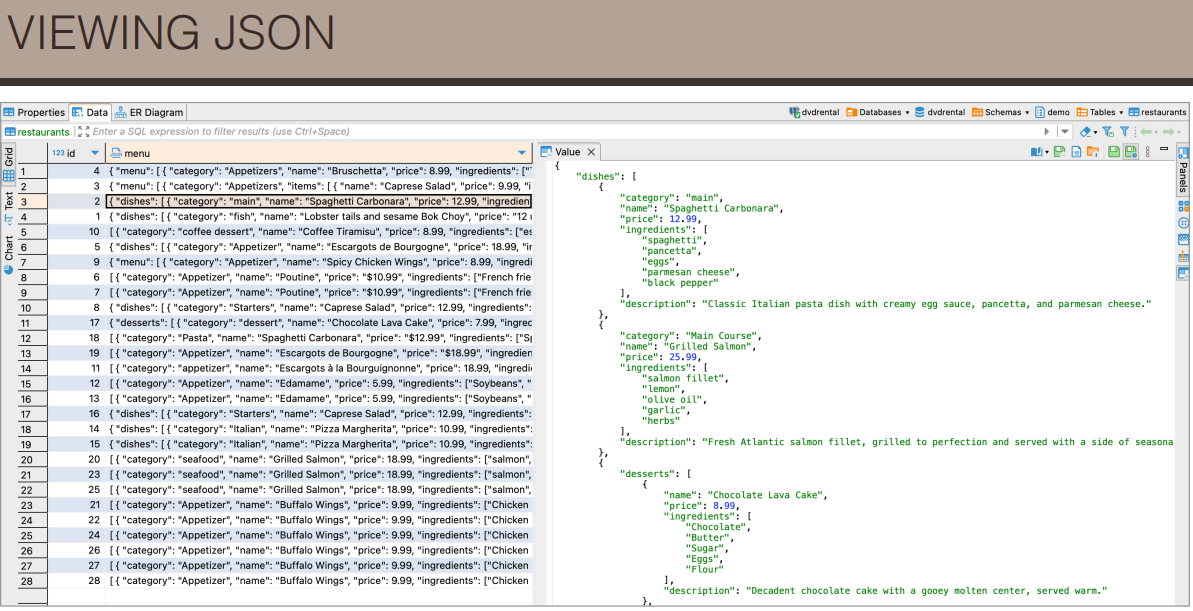
Challenges in Data Visualization
While document databases offer great flexibility, this same feature presents significant challenges when it comes to data visualization. The non-tabular structure of document databases can make it difficult to represent data visually in a meaningful way, especially when compared to the straightforward rows and columns of relational databases.
- Schema Variability: Since documents within a database can have different structures, creating uniform
- visualizations is challenging.
- Complex Queries: Extracting the right data for visualization often requires complex queries, which can be time-consuming and computationally expensive.
- Tool Compatibility: Many traditional data visualization tools are designed with relational databases in mind, and may not natively support the hierarchical and nested structures found in document databases.
Initial Visualization Challenges
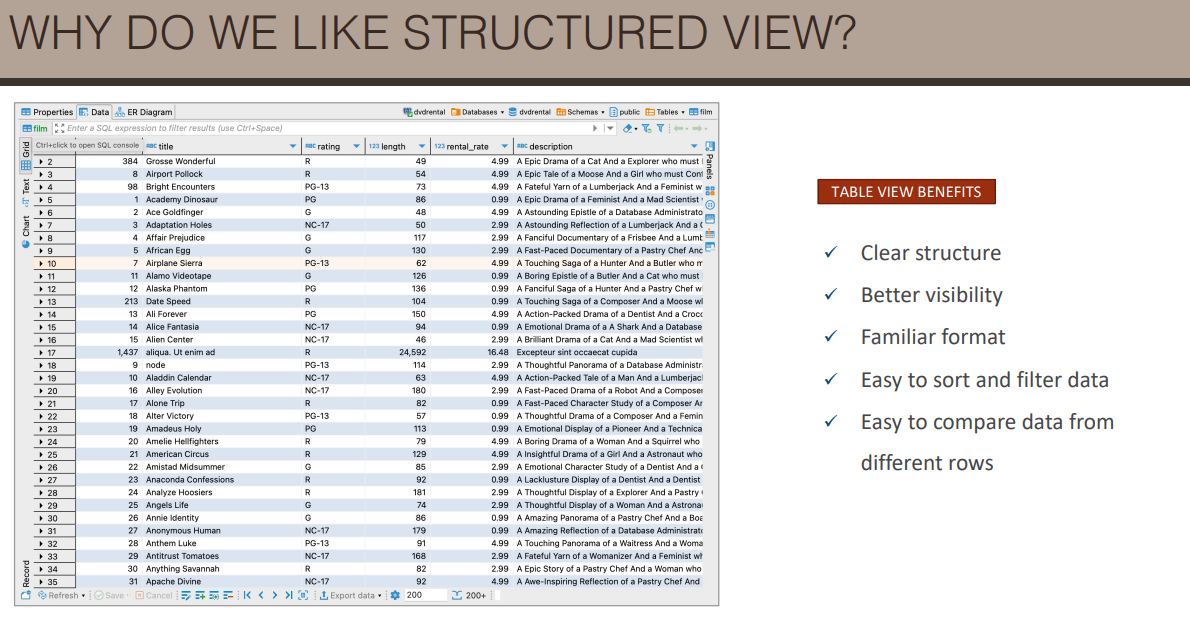
One of the most common user requests is simply to view their documents. While this may seem like a basic feature, the challenge lies in how the data is displayed. For instance, even relational databases like PostgreSQL, which can store JSON data, often do not present it in a user-friendly manner. Typically, JSON data appears as a plain text blob in a single column, which is far from ideal for readability and usability.
To address this, there is a clear need for better presentation formats. Users expect JSON data to be displayed in a standardized, readable format, with proper indentation and structure. For example, raw JSON data in a single row can be almost impossible to interpret. However, when formatted correctly, the JSON becomes much more accessible and easier to work with.
Tools and Libraries for JSON Visualization
Thankfully, there are numerous libraries available that can display JSON data in a more readable format. These libraries are tailored for various platforms, whether you are developing a web application or a desktop tool. Given the extensive range of options, finding a suitable library to add JSON visualization to your project is usually straightforward.
The Demand for Editing Capabilities
Once users can view their documents, the next logical step is often to edit them. After understanding the document’s content, users frequently want the ability to make changes directly. This demand isn’t limited to technical users; increasingly, business users also need to interact with databases. With well-formatted JSON, even those with limited technical skills can quickly comprehend and modify the content as needed.
Most JSON visualization libraries come with built-in editing features, making it unnecessary to develop these capabilities from scratch. These pre-existing tools are robust and widely available, allowing users to edit JSON documents easily and efficiently.
Handling Multiple Documents Simultaneously
Displaying and editing a single document is just the starting point when working with document databases. Given the NoSQL architecture of these databases, which are built to manage vast volumes of documents, users often need to view and interact with multiple documents at once. This introduces additional complexities in the visualization process.
Best Practices for Listing JSON Documents
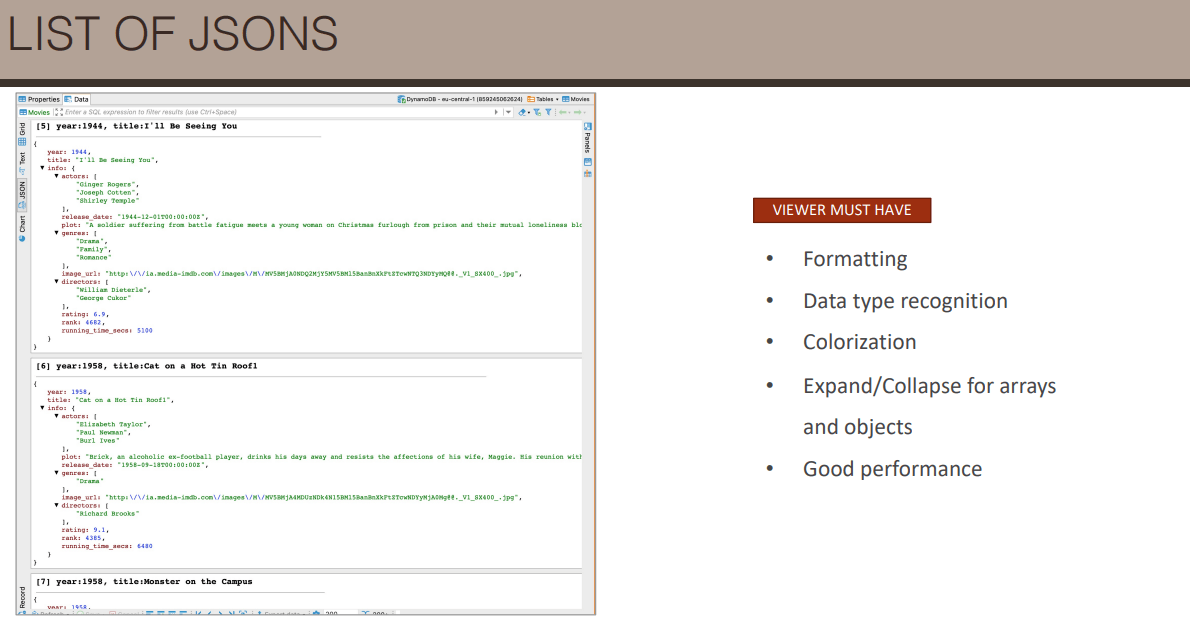
When presenting a list of JSON documents, it’s crucial to follow best practices that enhance readability and usability. Each document should be well-formatted, with data types recognized and highlighted according to the document’s structure. This visual differentiation makes it easier for users to quickly scan through the documents and identify the information they need.
Another important feature is the ability to expand and collapse sections within a JSON document. This functionality allows users to either get a quick overview of the document’s structure or delve into specific details as needed. This is particularly useful for navigating large, complex documents where a simple overview might not suffice. These considerations are vital in ensuring that users can efficiently navigate and manipulate data within document databases, ultimately leading to a more productive and user-friendly experience.
Balancing Flexibility and Performance in Document Databases
The landscape of document databases is diverse, with use cases ranging from small, simple documents to extremely large and complex ones containing numerous fields and subfields. Managing these larger documents presents a significant challenge in terms of navigation and information extraction. Users, therefore, expect flexibility, especially when handling large volumes of documents.
Managing Performance with Large Documents
One critical consideration when dealing with large documents is performance. Attempting to display multiple massive documents simultaneously can significantly slow down your application. It’s essential to anticipate these performance issues and implement strategies to manage the load effectively. Techniques such as pagination, lazy loading, and query optimization can dramatically improve the user experience by ensuring that the application remains responsive, even when handling large datasets.
Filtering and Finding Documents
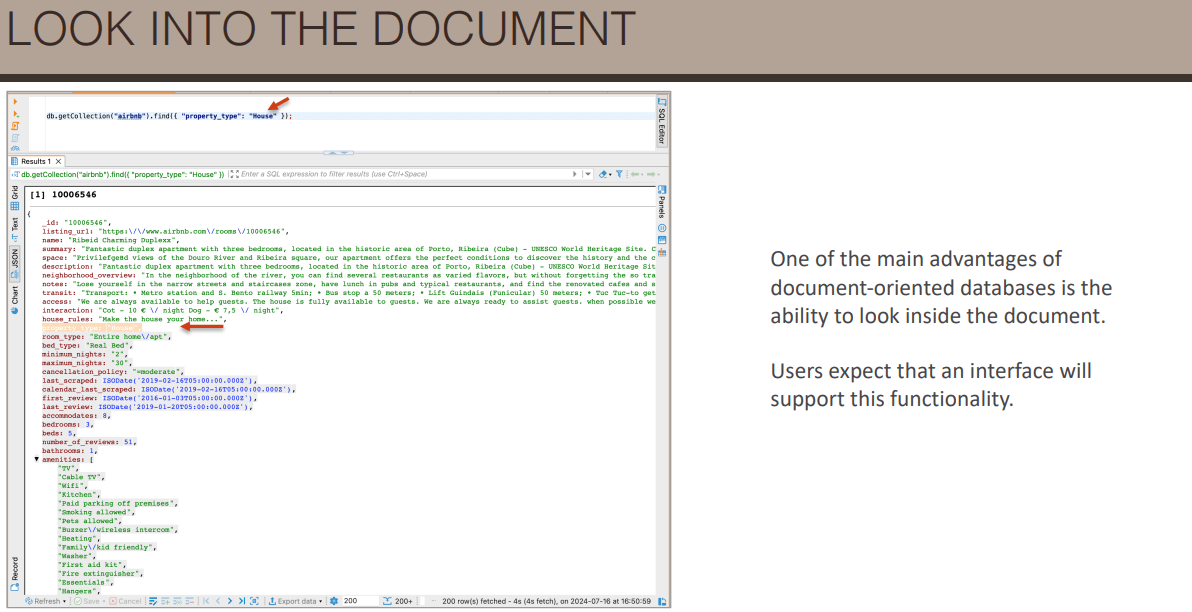
Once documents are displayed in a user-friendly format and an editor is integrated into your interface, another common request arises: the ability to filter documents. Users generally prefer not to sift through an entire list of documents; instead, they want to focus on those that meet specific criteria. Fortunately, most document databases inherently support efficient querying and filtering, thanks to their internal structure. This capability allows users to narrow down their dataset to the relevant documents, enhancing their workflow and saving time.
Filtering is more than just a convenience—it’s an expectation. Users anticipate that any tool or application working with document databases will offer robust filtering options to streamline their interactions with large datasets.
The Expectation for Tabular Views
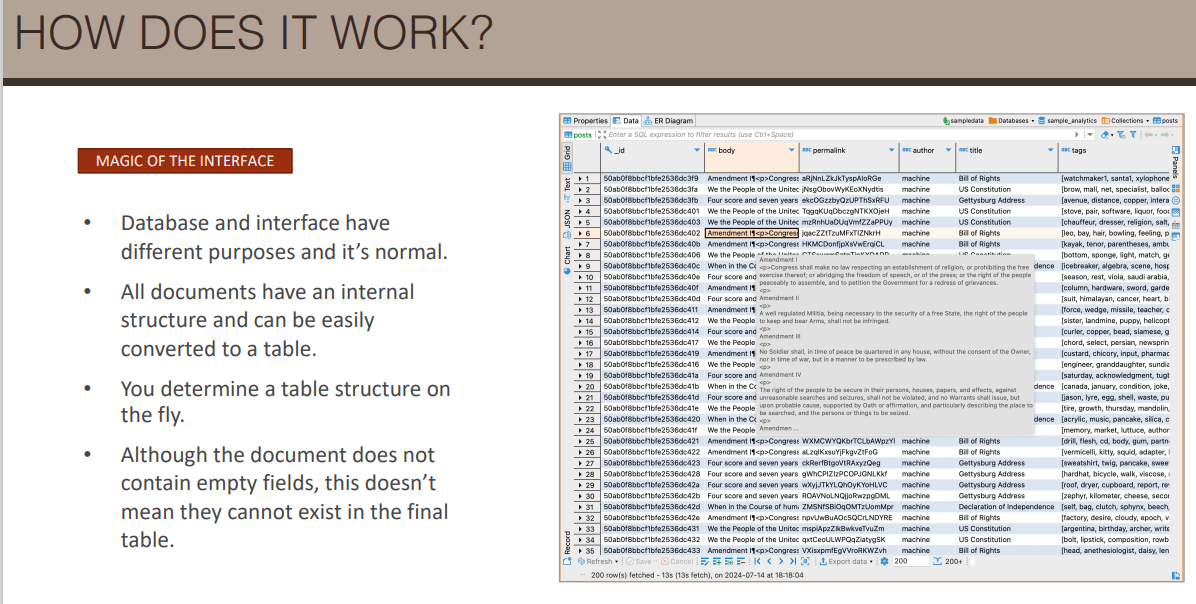
Even with advanced features like JSON visualization, filtering, and sorting, there is still a significant user demand for tabular views. This trend is largely driven by the data-driven decision-making culture that prevails in many organizations. Despite the unstructured nature of document databases, users often want to interact with their data in a structured format, particularly in tables.
This expectation is rooted in the long-standing familiarity with relational databases and tools like Microsoft Excel. Tables offer a clear structure, easy sorting and filtering, and the ability to compare data across different rows efficiently. Users appreciate the organized, compact view that tables provide, especially when dealing with large datasets. This demand underscores the importance of flexibility in document databases, where users expect to have multiple ways to interact with and visualize their data.
Converting JSON to Tables for Enhanced Data Management
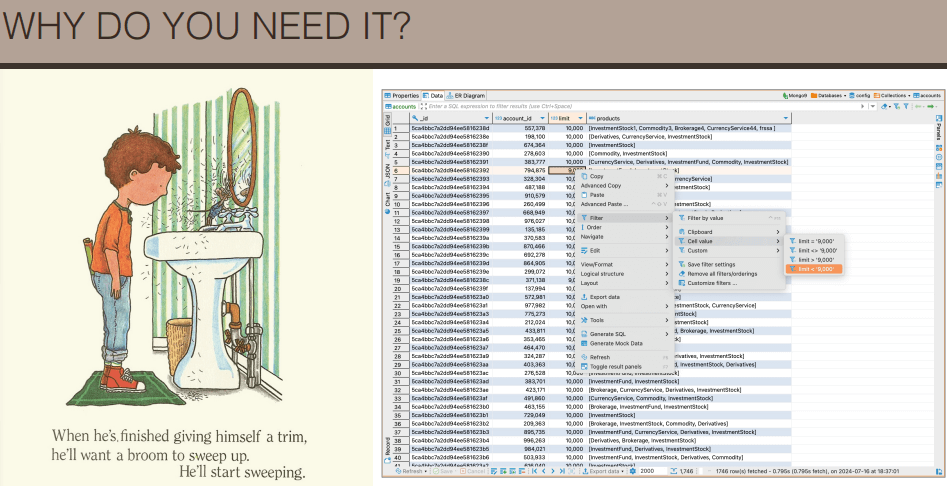
Converting JSON documents into tabular format offers numerous benefits, allowing users to efficiently view and manipulate a large volume of data. Tables provide a more compact and organized way to navigate through documents compared to traditional JSON lists. This approach enables users to analyze data more effectively by quickly identifying and comparing specific rows.
To cater to diverse user preferences and use cases, providing the flexibility to switch between JSON and tabular views enhances the overall user experience.
Transforming Unstructured Documents into Structured Tables
An important consideration is how to effectively present unstructured documents from a database in a table format. Simply inserting the document into a table with two columns (one for ID and one for the document) results in an unreadable format. This is where the interface design plays a crucial role.
Mapping Document Structures to Tables
The key solution lies in leveraging the internal structure of JSON documents. By mapping the fields within a document to column names in a table, users can easily navigate and understand the data. Each field value populates the corresponding row, linked to its unique ID, creating a readable tabular representation.
Addressing Variability in Document Structures
Dealing with the diverse nature of document structures in databases poses a challenge. Documents within the same collection may vary significantly, leading to difficulties in displaying them uniformly on a table. To overcome this, identifying common fields shared across documents is essential. By defining the table structure based on consistent fields, users can interact with the data effectively.
Creating a Structured Table
Generating a meaningful table involves reviewing documents in a batch to identify necessary columns based on shared fields. This structured approach ensures data is populated row by row, resulting in a coherent table for easy navigation.
Handling Empty Fields in Tables
Document databases do not store empty fields, resulting in the appearance of empty cells in a table. Users are generally comfortable with this, as they are accustomed to handling empty fields in relational databases. This familiarity makes it easier for users to interact with and understand the data presented in table format.
By transforming unstructured documents into structured tables, users can seamlessly navigate and analyze data, bridging the gap between flexible document databases and structured tabular formats.
Advancing Data Analysis and Visualization in Document Databases
The significance of converting documents into a tabular format lies in the advantages it offers for traditional data analysis. Structuring documents in a table enables performing various analytical tasks, such as sorting, filtering, and report generation. While document databases may not inherently support sorting or filtering like relational databases, the interface plays a crucial role in compensating for this limitation.
Utilizing the Interface for Data Manipulation
In document databases, conventional methods like filtering and sorting operate differently compared to relational databases. However, by bringing the data into an interface, users can apply these operations at the interface level. This allows for ordering and sorting data as required, although these operations apply only to the data visible on the screen, not the entire dataset. This functionality simplifies data manipulation, making it more intuitive for users.
Managing Complex Document Structures
Document structures in databases can include arrays and nested objects, posing challenges for representation in a table format.
Handling Arrays in Tables
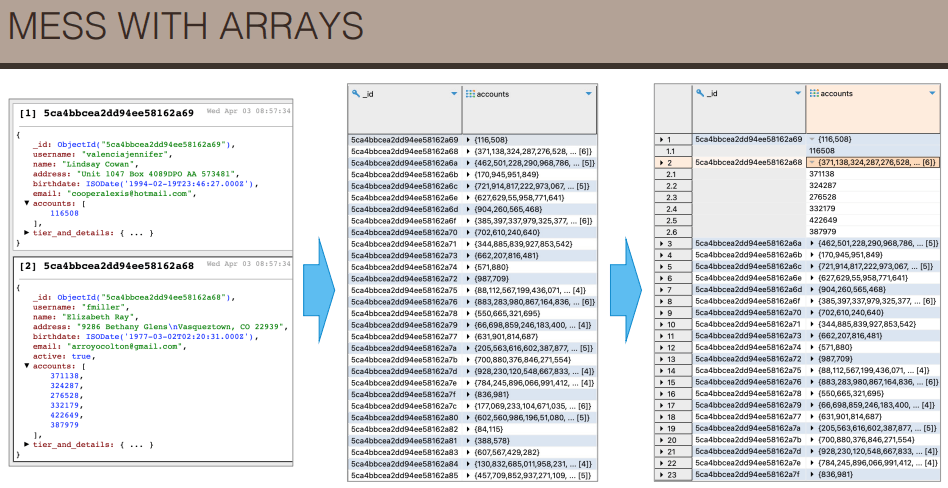
While converting simple field-value pairs into a table is straightforward, dealing with arrays requires a different approach. One method is to display array values in a single cell, separated by commas, which works well for text fields. However, for numerical or complex data types, displaying each array value in a separate cell enhances readability and comprehension.
Managing Nested Objects
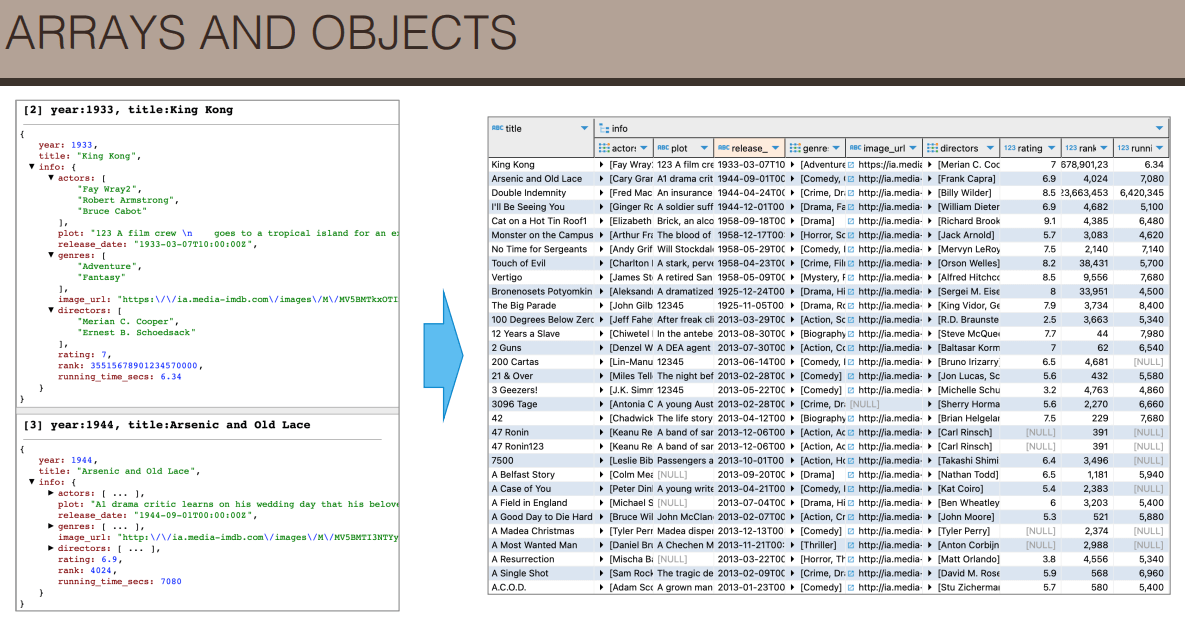
Nested objects within documents, containing arrays or field-value pairs, present additional complexities. To maintain the structure of nested objects, organizing columns at the header level helps preserve the object’s internal layout. This approach ensures that even intricate nested structures can be represented clearly and comprehensively in the table.
Maintaining Adaptability
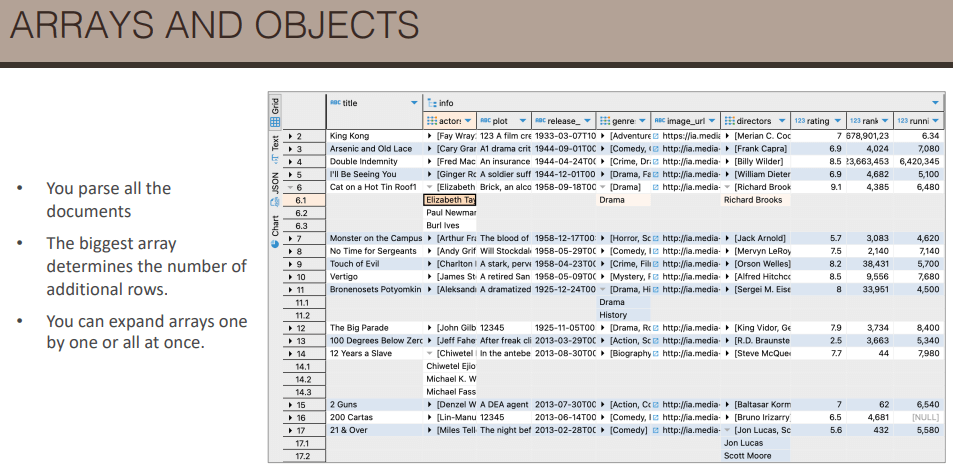
It is essential to acknowledge that not all documents will contain nested objects or arrays, and some fields may remain empty. However, implementing a structured approach allows for the flexibility needed to accommodate diverse document structures. Users can expand or collapse specific nodes in the interface, providing a customizable experience for viewing and editing data.
By integrating these functionalities into the interface, users are equipped with robust tools to analyze and manipulate complex document structures effectively. This enhances usability and bridges the gap between unstructured document databases and the structured, analytical approach users expect.
Managing Complex Document Structures
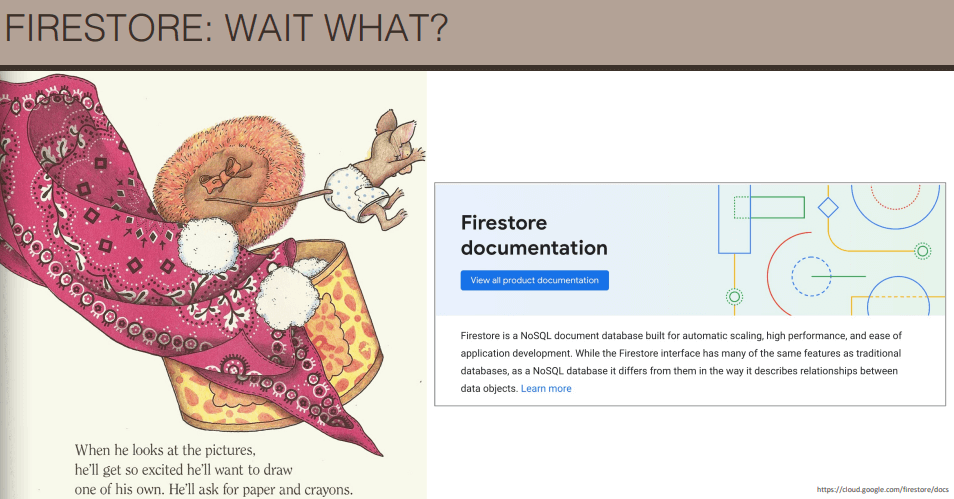
Our exploration into visualizing and working with document databases has delved into managing nested objects, and arrays, and converting complex structures into tables. However, the introduction of Firestore adds a new dimension to this landscape.
Firestore's Innovative Data Relationship Model
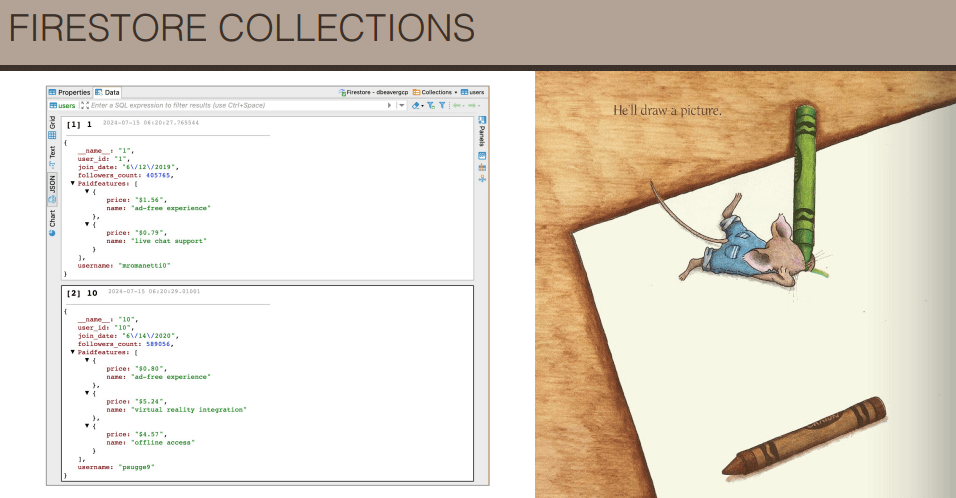
Google’s Firestore, a NoSQL document database, introduces a unique approach to data relationships, setting it apart from other document databases. While traditional document databases are associated with unstructured data, Firestore introduces the concept of subcollections, challenging this notion.
Deciphering Subcollections in Firestore
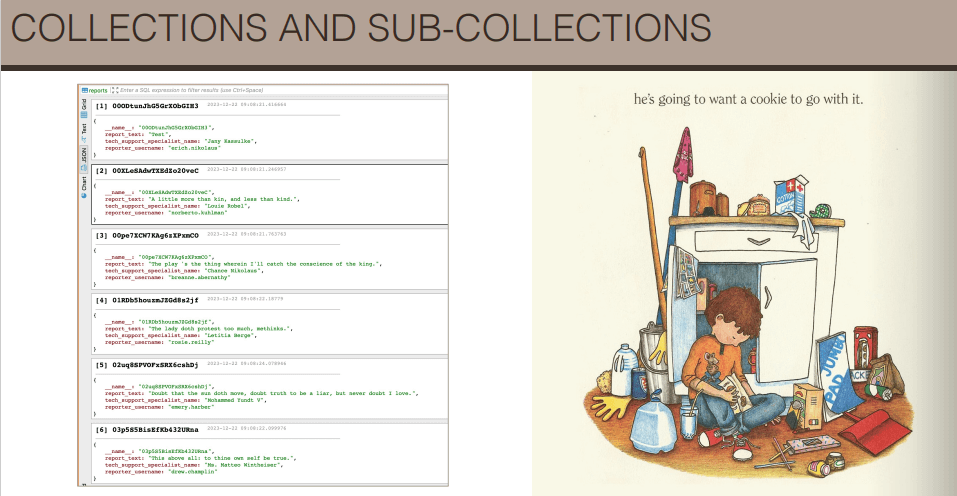
Firestore documents initially resemble those in typical document databases, featuring field-value pairs, arrays, and nested objects. However, Firestore introduces subcollections, which are collections within a collection. These nested subcollections are revealed when data is requested, providing a deeper insight into the document structure.
Visualizing Subcollections
Visualizing subcollections presents new complexities, as they introduce another layer to data hierarchy. Subcollections function as individual collections with their own set of documents, which can further contain arrays and objects. Each document may have multiple subcollections, potentially creating an intricate hierarchy of data.
The Future of Document Databases
While Firestore represents a significant advancement in document databases, the evolution in this field is ongoing. New document databases constantly emerge, blending elements from relational databases, big data solutions, and more. These hybrid databases continue to challenge conventional categorization, ensuring that the landscape of document databases will evolve, presenting new opportunities and challenges in data visualization.
Conclusion
Document databases offer unparalleled flexibility for storing complex and evolving data. However, effectively visualizing this data, particularly when it involves intricate structures like arrays, objects, and subcollections, remains a significant challenge. While advancements have been made in converting document data into tabular formats for familiar analysis, the limitations of this approach become apparent when dealing with more complex scenarios.
As document databases continue to evolve, the need for innovative visualization techniques becomes increasingly critical. To fully unlock the potential of these databases, developers, and data analysts must collaborate to create tools and methods that can effectively handle the diverse and dynamic nature of document data. By addressing the challenges outlined in this article, we can pave the way for more insightful and actionable data exploration.
Related posts
Databases: Switching from relational to document models, Part 1
Relational Databases: review, ormalization, SQL language and joins.
Why a Document Database Community is Essential for Modern Application Development
Joining a document database community can help you stay up-to-date with the latest trends and developments in this field, and enable you to become a better developer.
Subscribe to Updates
Privacy Policy



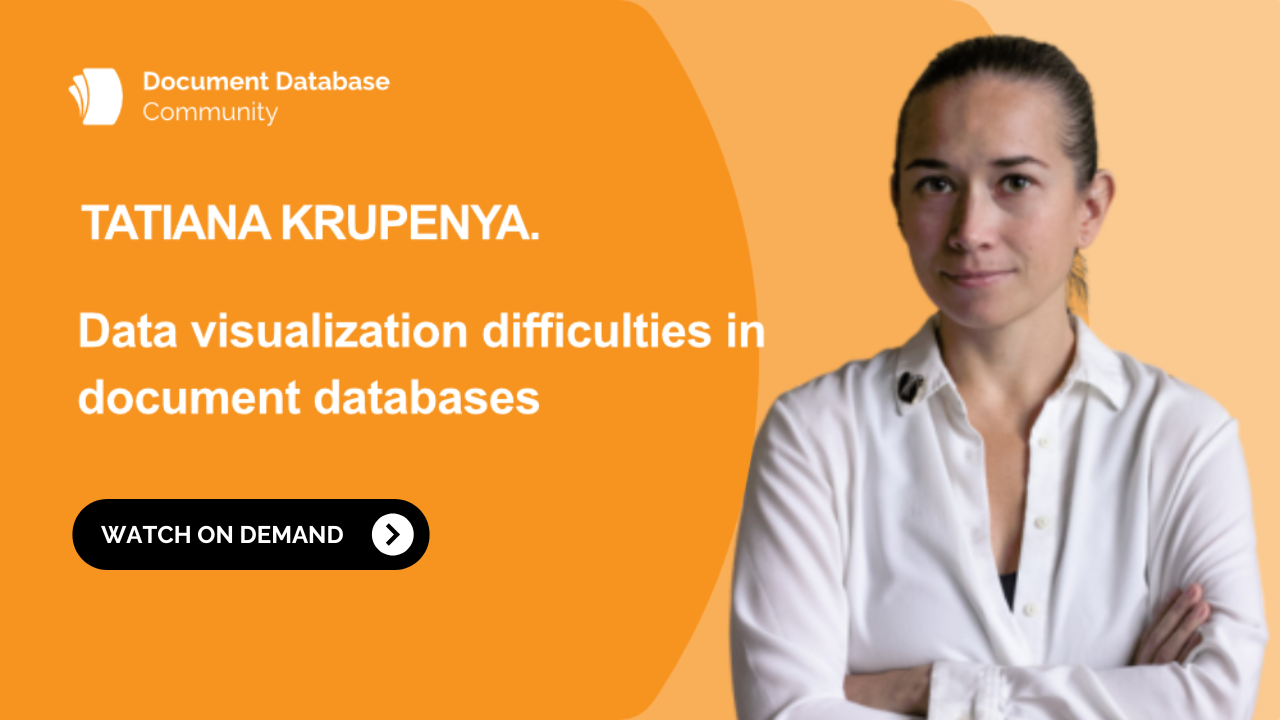
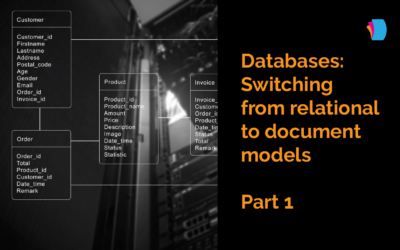

0 Comments